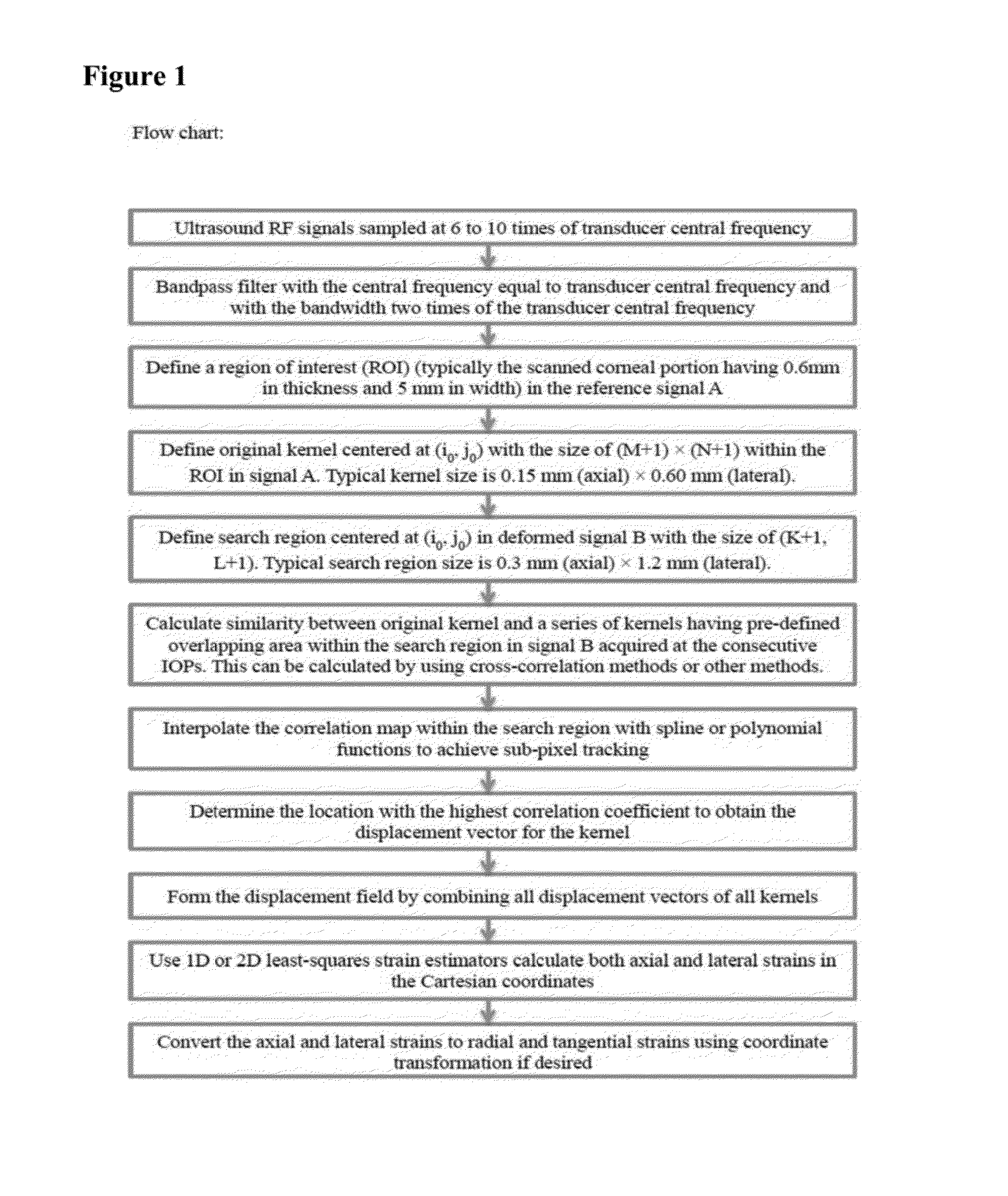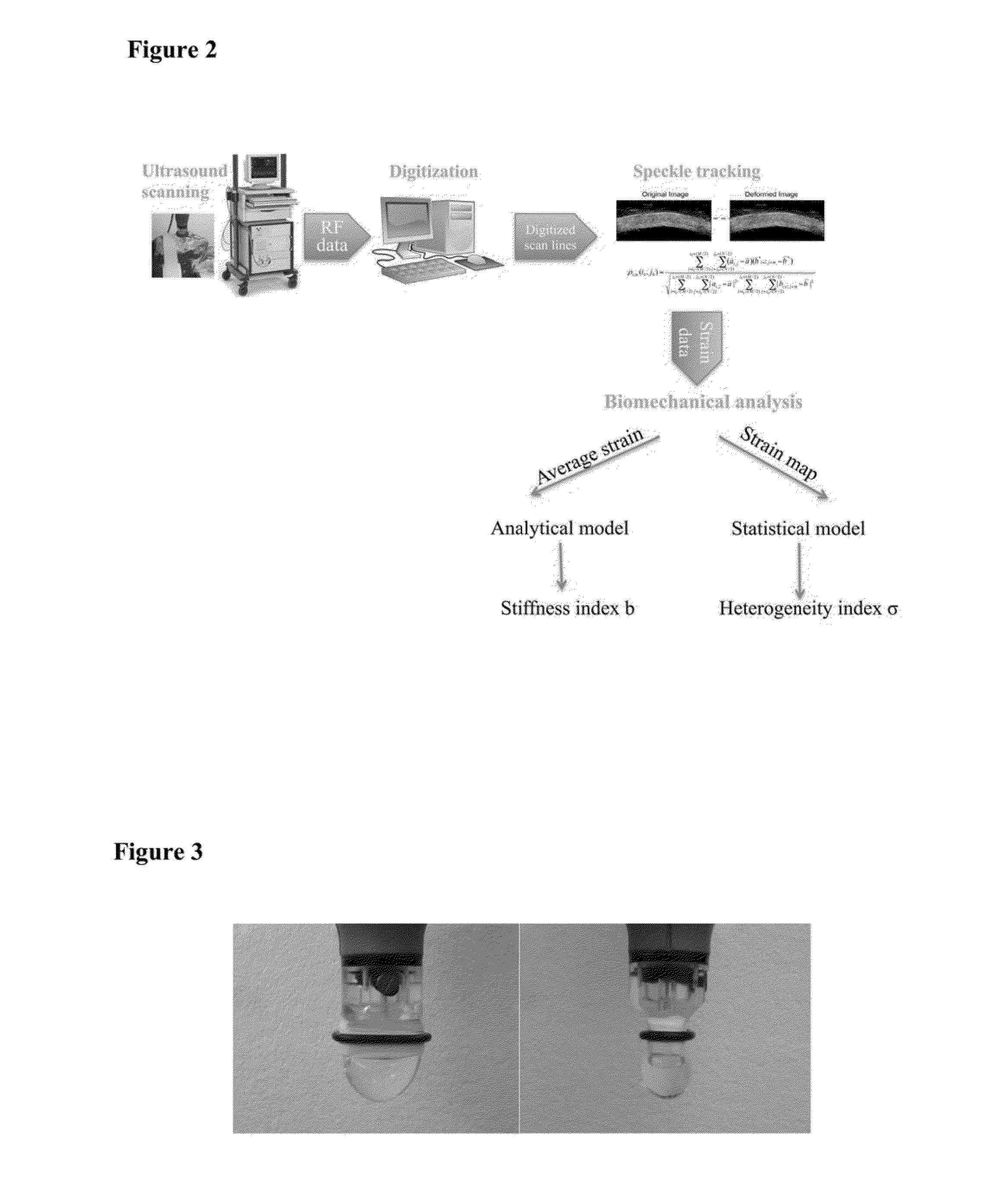Ophthalmic elastography
a biomechanical and ophthalmic technology, applied in the field of ophthalmic elastography, can solve the problems of insufficient structural data alone to make informed clinical decisions, inability to in vivo methods that can image spatially resolved mechanical properties, and difficulty in prediction
- Summary
- Abstract
- Description
- Claims
- Application Information
AI Technical Summary
Benefits of technology
Problems solved by technology
Method used
Image
Examples
example 1
Analytical Model For Deriving the Biomechanical Index From Strain Measurements
[0049]Based on the analysis of inflation tests of corneas, an analytical model is used to fit the strain-IOP curve. The strain-IOP curve passes through the point (5 mmHg, 0%) because an IOP of 5 mmHg is used as the reference pressure (i.e., 0% strain). Equation 2 (Eq. 2) shows the relationship between IOP and the radial strain, which can be accurately measured during ocular pulse.
strain=b*IOP−1−b*5−1 Eq. 2
[0050]In this model there is only one unknown parameter (“b”), which determines the overall shape of the strain-IOP curve, to predict the strain response of the cornea at a given IOP. As shown in FIG. 4, a smaller “b” value gives a shallower curve, indicating a stiffer cornea, and a larger “b” value gives a deeper curve, indicating a more compliant cornea. Therefore, “b” can be used as a stillness index obtained from the strain-IOP response.
[0051]FIG. 4 shows the plots of Eq. 2 when “b” values are 0.05,...
PUM
 Login to View More
Login to View More Abstract
Description
Claims
Application Information
 Login to View More
Login to View More - R&D
- Intellectual Property
- Life Sciences
- Materials
- Tech Scout
- Unparalleled Data Quality
- Higher Quality Content
- 60% Fewer Hallucinations
Browse by: Latest US Patents, China's latest patents, Technical Efficacy Thesaurus, Application Domain, Technology Topic, Popular Technical Reports.
© 2025 PatSnap. All rights reserved.Legal|Privacy policy|Modern Slavery Act Transparency Statement|Sitemap|About US| Contact US: help@patsnap.com



